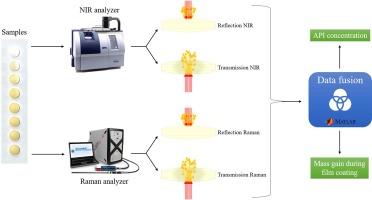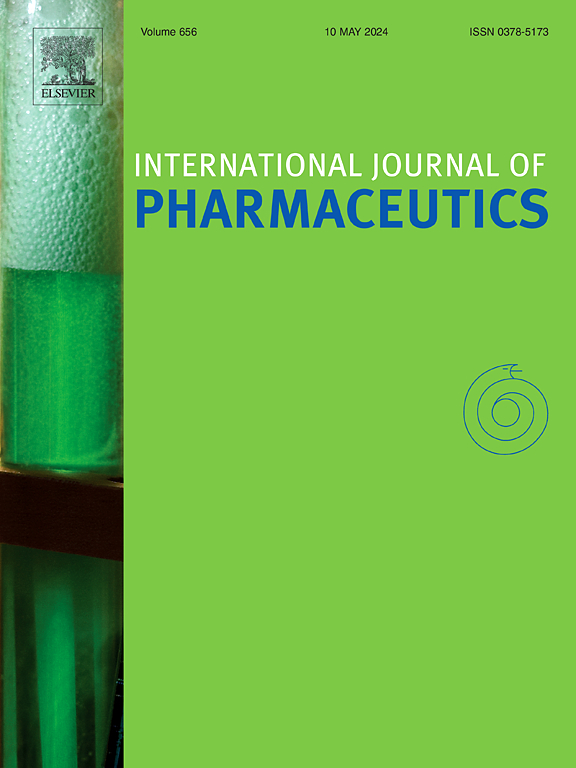利用近红外光谱、拉曼光谱和数据融合技术同时预测薄膜包衣片剂的原料药浓度和增重。
IF 5.3
2区 医学
Q1 PHARMACOLOGY & PHARMACY
引用次数: 0
摘要
本研究采用偏最小二乘法(PLS)回归结合三种数据融合(DF)技术,对薄膜包衣片中的活性药物成分(API)浓度和增重进行了同步预测:低水平 (LLDF)、中水平 (MLDF) 和高水平 (HLDF)。近红外(NIR)和拉曼光谱均采用反射和透射模式,为每片药片提供四种类型的光谱数据。透射模型通过捕捉整个片剂的数据,被证明对原料药预测更为有效,而反射模型则通过关注表面层,在评估质量增加方面表现出色。在 DF 策略中,带有主成分分析 (PCA) 的 MLDF 通过过滤无关信息,在预测准确性方面的改进最为显著。变量选择方法通过减少所需潜变量的数量,进一步提高了模型性能。总之,将多个光谱数据集和 DF 技术整合在一起所建立的模型能以较低的误差对评估样本进行预测,这证明了它们在优化药品生产质量控制方面的潜力。本文章由计算机程序翻译,如有差异,请以英文原文为准。

Simultaneous prediction of the API concentration and mass gain of film coated tablets using Near-Infrared and Raman spectroscopy and data fusion
This study investigates the simultaneous prediction of active pharmaceutical ingredient (API) concentration and mass gain in film-coated tablets using Partial Least Squares (PLS) regression combined with three data fusion (DF) techniques: Low-Level (LLDF), Mid-Level (MLDF), and High-Level (HLDF). Near-Infrared (NIR) and Raman spectroscopy were utilized in both reflection and transmission modes, providing four types of spectral data per tablet. Transmission models proved more effective for API prediction by capturing data from the entire tablet, while reflection models excelled in assessing mass gain by focusing on the surface layer. Among the DF strategies, MLDF with Principal Component Analysis (PCA) offered the most significant improvements in predictive accuracy by filtering out irrelevant information. Variable selection methods further enhanced model performance by reducing the number of latent variables required. Overall, the integration of multiple spectral datasets and DF techniques resulted in models that gave predictions for evaluation samples with lower errors, demonstrating their potential to optimize quality control in pharmaceutical manufacturing.
求助全文
通过发布文献求助,成功后即可免费获取论文全文。
去求助
来源期刊
CiteScore
10.70
自引率
8.60%
发文量
951
审稿时长
72 days
期刊介绍:
The International Journal of Pharmaceutics is the third most cited journal in the "Pharmacy & Pharmacology" category out of 366 journals, being the true home for pharmaceutical scientists concerned with the physical, chemical and biological properties of devices and delivery systems for drugs, vaccines and biologicals, including their design, manufacture and evaluation. This includes evaluation of the properties of drugs, excipients such as surfactants and polymers and novel materials. The journal has special sections on pharmaceutical nanotechnology and personalized medicines, and publishes research papers, reviews, commentaries and letters to the editor as well as special issues.

 求助内容:
求助内容: 应助结果提醒方式:
应助结果提醒方式:


